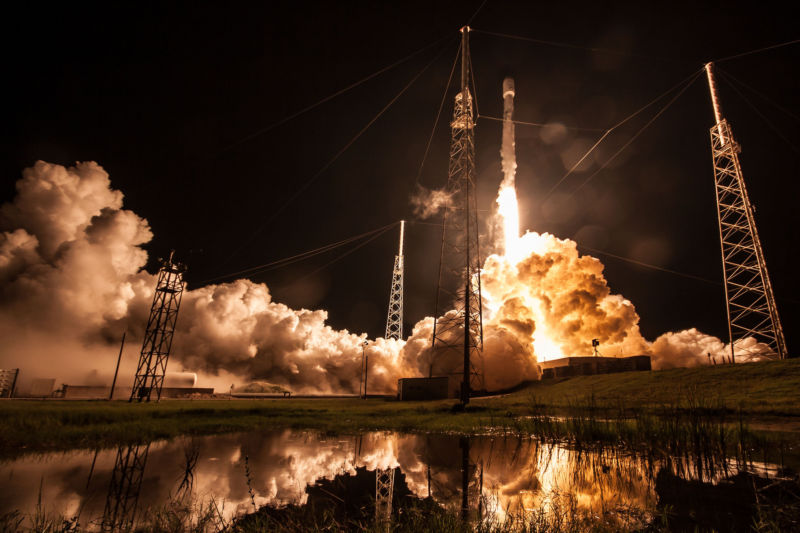
12:55am ET Monday Update: A little more than an hour after its launch window opened—the delay was due to remnant thunderstorms in the area—SpaceX’s Falcon 9 rocket launched from Florida early on Monday morning. The rocket’s first stage made a flawless flight, and then descended to a drone ship in the Atlantic Ocean and safely landed.
About 10 minutes after the launch, the rocket’s second stage completed its initial burn, with a secondary burn and satellite deployment expected about 40 minutes after liftoff.
This was SpaceX’s 16th mission of 2018. Two thirds of the orbital launches from U.S. soil this year have been flown by the California-based company.
Original post: After slightly more than a month, SpaceX returns to the launch pad Sunday night to deliver the Telstar 18 Vantage satellite into orbit. The four-hour launch window opens at 11:28pm ET (03:28 UTC) for a mission from Cape Canaveral Air Force Station in Florida.
The flight of a new Block 5 version of the Falcon 9 booster will seek to loft a large telecommunications satellite into geostationary transfer orbit. At 7,060kg, this is the second heaviest satellite SpaceX has flown; the heaviest is the Telstar 19 Vantage satellite in July. It weighed 15kg more.
SpaceX will seek to recover the booster, which may prove a challenge given the tropical activity raging across the Atlantic basin. Due to the heavy payload, the first stage of the Falcon 9 rocket will land far out to sea, 660km downrange from the Florida spaceport. There, the Of Course I Still Love You drone ship will be waiting.
Provided the rocket launches on Sunday night, the growing storm Florence—which is likely to be a Category 2 or 3 hurricane by that time—should still be more than 1,000km away. However, another low-pressure system is relatively close by, and choppy wave conditions may make landing more challenging than normal. A delay of one or two days would likely only worsen conditions in the area as Florence gets closer.
A delay seems possible, given that the weather in Florida is not ideal, if typical for late summer. Thunderstorms are likely during the afternoon and evening hours over Cape Canaveral, and while these should clear before the launch window opens, lingering cumulus and thick clouds may imperil the attempt. Forecasters predict a 60 percent chance of favorable conditions Sunday night.
After this mission, SpaceX will have another approximately month-long break before their next launch, the flight of an Argentinian satellite from California. The highlight of that mission should be the company’s first attempt to make land-based landing of the Falcon 9 on the West Coast, at Vandenberg Air Force Base. The SpaceX landing site is near the launch pad, so photographs of the landing could be quite dramatic. Ars will have a photographer on hand to capture the show.
For the present launch, the webcast below should begin about 15 minutes before Sunday night’s attempt.

